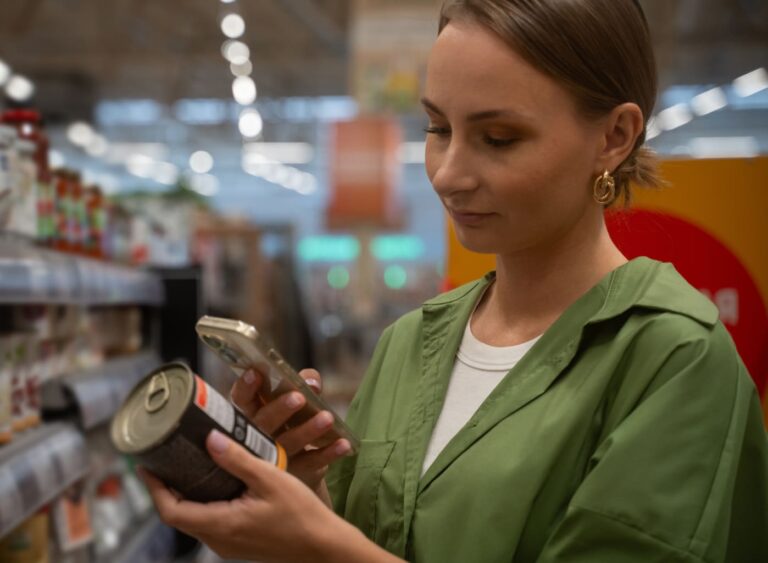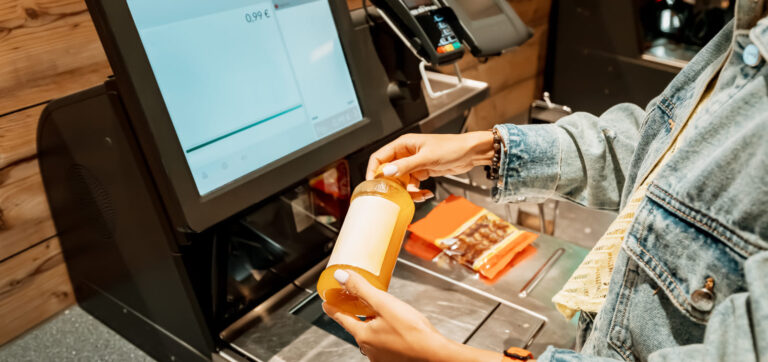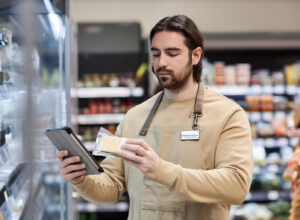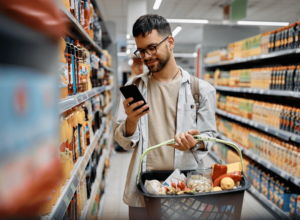Supermarkets are falling out of love with self-checkout lanes. After significant investments by most major retailers, many are now coming to grips with the impact of self-checkout-enabled theft – both intentional and unintentional – on their bottom lines. Maintaining the notoriously capricious self-service machines has also proven more costly than expected, prompting store chains to scale back their automated checkout initiatives.
That’s not to say that self-checkout itself is on the way out – after all, it now makes up a significant chunk of all grocery checkouts. But the focus has shifted to mobile self-scanning, for which demand is growing rapidly.
Mobile self-scanning – also called Scan & Go – moves the entire shopping experience further into the digital realm. Here, customers scan barcodes on items as they take them off the shelves, pay for them in the app, and walk out.
Why has mobile self-scanning become the industry’s darling while self-checkout lanes are losing momentum? The answer lies in four key advantages Scan & Go has over its competitors.
Advantage #1: Combatting theft through social accountability
A big drawback of self-checkout lanes is how easy it is for customers to check out fewer items than they’re actually taking home. This can be unintentional, e.g., when the checkout is complicated. But it can also be intentional, and the anonymity and weaker controls suggest a low risk of being caught stealing.
Mobile self-scanning apps lets retailers address this problem by de-anonymizing customers. They can require customers to create an account with their personal information and bank details before they can use the Scan & Go feature.
Personal identification increases the perceived risk of shoplifting – even of the unintentional kind. Additionally, it becomes much harder to attempt the same at other stores once an account has been banned over misbehavior.
Advantage #2: Increasing store loyalty with digital rewards
Customers with a personal account can receive loyalty points and similar rewards for regularly shopping at the same retailer. Since most people have their phones on them at all times, forgetting a loyalty card or coupon at home is a thing of the past.
With Scan & Go, customers scan products as they take them off the shelves. This means any discounts can be applied immediately and loyalty points updated in real time. And: The app can draw attention to it right as it happens, which makes store promotions and rewards programs look more relevant and recognizable. All this incentivizes spending.
Advantage #3: Recommending products based on previous purchases (while respecting privacy)
By accessing a customer’s purchase history, self-scanning apps can recommend similar or complementary products, which can increase spending. They can also display individualized discounts, making it more likely that the customer will try the recommended product at least once.
That said, retailers need to visibly respect their customers’ privacy so they don’t lose their trust. Like the scanner module itself, the algorithms determining which products to recommend should run on the device itself to avoid sending data to a server. In addition, retailers should never sell customer data – and make it clear to app users that they needn’t worry about this.
Advantage #4: Maintaining one app vs. scores of machines
Acquiring and installing self-checkout terminals is expensive – and so is their maintenance. In contrast, one mobile self-scanning app can service a virtually unlimited number of customers across many stores. After the initial investment, maintaining a mobile app is inexpensive, with the added bonus that apps don’t break down after years of wear and tear.
Furthermore, software is extensible, whereas a self-service machine’s functionality is largely set in stone at the time of purchase. By taking user feedback on board and adapting to current trends, retailers can continuously increase the value of their self-scanning apps and make them a mainstay on customers’ phones.
Conclusion
Automated checkout is here to stay, even as self-service lanes are being scaled back. By adopting self-scanning technology early, retailers can get ahead of the competition and earn the goodwill of digitally savvy customers.
In our work with clients like Coop Estonia and Rimi Baltic, we’ve experienced the advantages of Scan & Go for retailers and their customers first-hand. By integrating our Barcode Scanner SDK into their mobile self-scanning apps, they were able to cut costs, accelerate Scan & Go roll-out across their stores, and increase user engagement.
If you want to learn more about how our solutions can help you embrace the digital retail revolution, contact us at sdk@scanbot.io.







